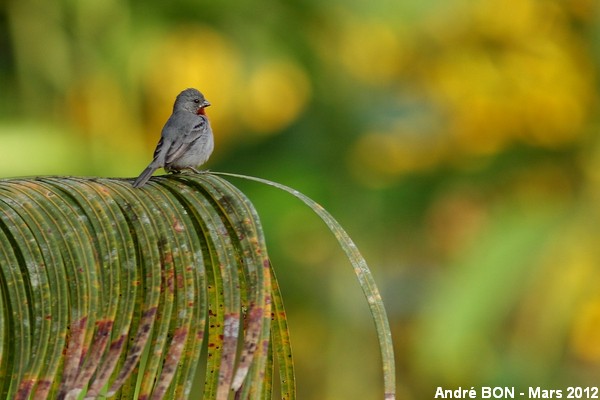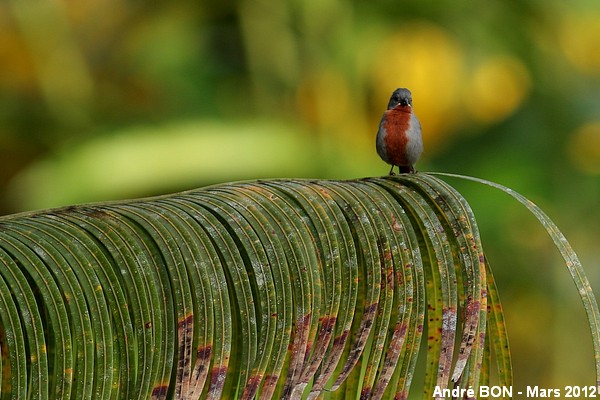

| Chestnut-bellied Seedeater (Sporophila castaneiventris (Cabanis, 1848)) |


|
|
Scientific name: Sporophila castaneiventris (Cabanis, 1848) Common name: Chestnut-bellied Seedeater French name: Sporophile à ventre châtain Order: Passeriformes Family: Thraupidae Size: 10-11 cm. Habitat: Grassy places on woodland edges, river bancs, marsh edges, parks and gardens. Food: Grass seeds. Nesting: The open cup-shaped nest is built with grasses and fibres, in a bush or on a shrub. There are two to three eggs per brood. Migration: Sedentary. Geographic area: Guyana, Suriname, French Guiana, Colombia, Ecuador, Brazil, Peru and Bolivia, more precisely in the Amazonian Basin but missing in the central-north and south-east parts. |
The Chestnut-bellied Seedeater has a blue grey upper side, including rump and flanks. Throat, chest and belly are chestnut. The female is an olive brown colour as for almost all Sporophila species. Telling species apart is then often based on the presence of males. There is a possible confusion with the Ruddy-breasted Seedeater (Sporophila minuta) in the north-east part of the range. Males of this last species have rufous rump and flanks. |
| [To know more about the Chestnut-bellied Seedeater] [Next picture] [Top] |

|
The village of Saül is a very interesting place for bird watching. I have almost taken this picture from my hammock. Rump and flanks are a grey-blue colour. |
| [To know more about the Chestnut-bellied Seedeater] [Previous picture] [Top] |

|
Here is another view showing the chestnut throat, chest and belly. |